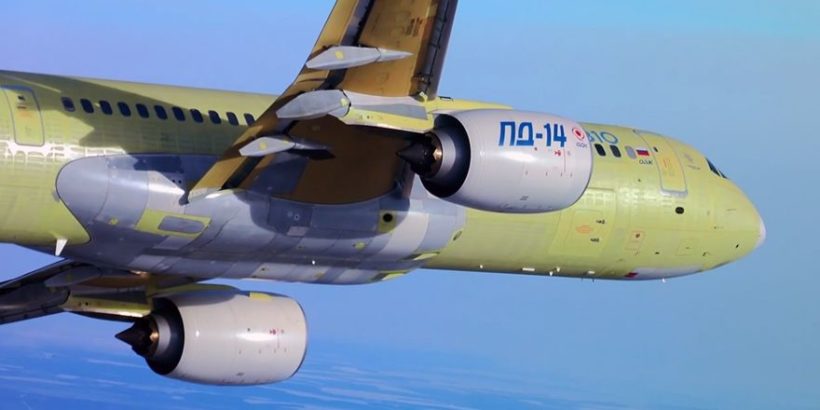A turbojet/turbofan engine is an extremely complex device. Its turbine works in the most difficult conditions. Its most important element is the blade, which converts the kinetic energy of the gas flow into mechanical energy of rotation. One blade, and there are about 70 of them in each stage of an aircraft turbine, develops horsepower equal to that of a Formula 1 car engine, and at about 12,000 rpm it carries a centrifugal force equal to 18 tonnes, equal to the load on the suspension of a two-story London bus.
The temperature of the gas, with which the blade is in contact, is almost equal to half of the temperature on the surface of the Sun. This value is 200 °C higher than the melting temperature of the intermetallide (titanium aluminide) from which the blade is made. Imagine the following task: it is necessary to prevent the melting of an ice cube in a furnace heated to 200 °C. Designers manage to solve the problem of blade cooling by using internal air ducts and special coatings.
Moreover, while preserving all strength characteristics, blades made of titanium intermetallide are much lighter than similar ones made using the previously used nickel alloy casting technology. To create just this small part, which fits in the palm of your hand, it is necessary to develop more than a dozen sophisticated technologies. Each of these technologies is protected as an important state secret.
Only US (Pratt & Whitney, General Electric, Honeywell), British (Rolls-Royce), French (Snecma) and Russian (ODK-Aviation, ODK-Klimov, ODK-Saturn and ODK-Kuznetsov) companies have the technology for the entire cycle of modern turbofans. That is, there are fewer states that produce modern aviation turbojet engines than there are countries that possess nuclear weapons or launch satellites into space. China’s long-standing efforts, for example, have not yet been successful in this area. The Chinese were quick to copy and equip the Russian Su-27 fighter jet with their own systems, producing it under the J-11 index. However, they failed to copy its AL-31F engine.
On the prospects of engines for aircraft from Tu-214 to MC-21-400
Progress in aircraft engine building is characterized by several parameters, but one of the main ones is considered to be the gas temperature before the turbine. The transition to each new generation of engines, and there are five of them in all, was characterized by an increase in this temperature by 100-200 degrees. For example, gas temperature in the 1st generation turbojet that appeared in the late 1940s did not exceed 1150 °K (877 °С), in the 2nd generation (1950s) this parameter increased to 1250 °K (977 °С), in the 3rd generation (1960s) this parameter rose to 1450 °K (1177 °С), the 4th generation engines (1970-1980s) gas temperature reached 1650 °K (1377 °С). Turbine blades of 5th generation engines, the first examples of which appeared in the West in the mid-90s, operate at a temperature of 1900 °K (1627 °C). Currently, only 15% of engines in operation worldwide belong to the 5th generation.
The increase in gas temperature, as well as new design schemes, primarily dual-circuit, allowed for 70 years of turbojet development to make impressive progress. For example, the ratio of engine thrust to its mass has increased by five times during this time and has reached 10 for modern models. The compressor air compression ratio increased from 5 to 50 times, at the same time the number of compressor stages was halved from 20 to 10 on average. Specific fuel consumption of modern turbofans has halved compared to the 1st generation engines. Every 15 years the number of passengers carried worldwide doubles, while the total fuel consumption of the world fleet remains practically unchanged.
At present the only civilian aircraft engine of the 4th generation is manufactured in Russia – PS-90. If to compare it with PD-14 the two engines have similar mass (2950 kg of basic version PS-90A and 2870 kg of PD-14), dimensions (both have 1,9 m fan diameter), compression ratio (35,5 and 41) and takeoff thrust (16 and 14 tonnes).
At the same time the high-pressure compressor PD-14 consists of 8 stages, and PS-90 – from 13 with a smaller total compression ratio. Dual circuit efficiency of the PD-14 is twice as high (4.5 for the PS-90 and 8.5 for the PD-14) with the same fan diameter. As a result, specific fuel consumption in cruise flight by PD-14 will be reduced by 15% as compared to the existing engines: up to 0.53-0.54 kg/(kg-h) against 0.595 kg/(kg-h) of PS-90.
The PD-14 is the base engine for the family of 8 to 18 ton thrust engines. The business idea of the project is that all these engines are based on a unified gas generator with a high degree of perfection. The gas generator is the heart of the turbojet, which consists of the high-pressure compressor, the combustion chamber and the turbine. It is the manufacturing technology of these assemblies, primarily the so-called hot part, that is critical.
Test flights of PD-8 engine as part of IL-76 flying laboratory started
The family of engines based on the PD-14 will make it possible to equip virtually all Russian aircraft with modern propulsion systems: from the PD-8 for the short-range Sukhoi Superjet 100 to the PD-35, which can be installed on the Russian-Chinese airliner CR929. On the basis of gas generator PD-14 it is also possible to create gas compressor units and gas turbine power plants with capacity from 8 to 16 MW.
16 critical technologies were developed for the PD-14: monocrystalline high-pressure turbine blades with a promising cooling system, workable at gas temperatures up to 2000°K (1727°С), a hollow wide-chord fan blade made of titanium alloy, which helped improve fan stage efficiency by 5% compared to PS-90A, Low-emission combustion chamber made of intermetallic alloy, sound-absorbing structures made of composite materials, ceramic coatings on the hot parts, hollow low-pressure turbine blades etc.
The PD-14 engine received a type certificate in October 2018. In December 2020, the first flight of the MC-21 with this power plant took place. Over the past three years after certification, the expected operating conditions have been expanded and work has been done to increase the engine’s service life.
On December 29, 2022 Irkut Corporation received the approval from Rosaviatsiya (Russian Federal Air Transport Agency) for the major changes to the standard design of the MC-21 aircraft, related to installing the PD-14 engine, the wing made of the Russian composite materials and expansion of the expected operating conditions of the aircraft at low sub-zero temperatures.







